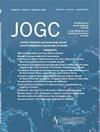冠状病毒病-2019 (COVID-19)和复发性妊娠丢失管理:来自三级中心的临床护理趋势
IF 2
Q2 OBSTETRICS & GYNECOLOGY
引用次数: 0
摘要
目的:探讨2019冠状病毒病大流行对加拿大不列颠哥伦比亚省复发性妊娠丢失(RPL)患者护理的影响。探讨2019冠状病毒病大流行期间社会经济地位对RPL患者医疗保健利用结果的差异影响。方法:这是一项回顾性队列研究,患者来自位于三级转诊中心的RPL诊所。根据患者首次就诊日期将患者分为两组:1)大流行前组(2018年3月1日至2020年2月28日)和2)大流行组(2020年3月1日至2022年2月28日)。数据来源于RPL诊所数据库和人口数据BC。评估的结果包括访问趋势、大流行的直接影响和社会经济影响。结果:除了在COVID-19大流行期间RPL诊所转诊到生育诊所的比率增加(4.90%对9.50%)外,各研究组之间的人口统计学和临床特征无显著差异。每位患者的平均就诊次数在大流行前(3.50±2.00)和大流行期间(3.40±3.40)具有可比性。然而,与大流行前(14.40±4.83)相比,大流行期间每月首次就诊次数(12.50±3.10)较低。在大流行前,远程保健很少见,在大流行期间,远程保健急剧增加,虚拟诊疗量高达总诊疗量的64%,占初次诊疗量的94%。大流行的爆发导致总数(38.80%)和初次就诊人数(51.70%)立即下降。物质剥夺程度较轻的人对医疗保健的利用较高,而社会剥夺程度较轻的人则有相反的效果。结论:COVID-19大流行影响了RPL患者在三级医疗中心接受的护理。向患者提供服务的方式发生了转变,对社区内的特定人群产生了独特的影响。本文章由计算机程序翻译,如有差异,请以英文原文为准。
COVID-19 and Recurrent Pregnancy Loss Management: Trends in Clinical Care From a Tertiary Centre
Objectives
To investigate the impact of the COVID-19 pandemic on the care received by patients with recurrent pregnancy loss (RPL) in British Columbia, Canada. To explore the differential impact of socioeconomic status on health care utilization outcomes during the COVID-19 pandemic for patients with RPL.
Methods
This is a retrospective cohort study of patients from an RPL clinic located within a tertiary referral centre. Patients were divided into 2 groups based on the date of their initial visit to the clinic: (1) pre-pandemic group (March 1, 2018–February 28, 2020) and (2) pandemic group (March 1, 2020–February 28, 2022). Data were sourced from the RPL Clinic Database and Population Data BC. Outcomes assessed included visit trends, immediate pandemic impact, and socioeconomic effects.
Results
Demographic and clinical characteristics were not significantly different between study groups, except for increased referral rates to fertility clinics by the RPL clinic during the COVID-19 pandemic (4.90% vs. 9.50%). The mean number of visits per patient was comparable between pre-pandemic (3.50 ± 2.00) and during the pandemic (3.40 ± 3.40). However, monthly initial visits were lower during the pandemic (12.50 ± 3.10) compared with pre-pandemic (14.40 ± 4.83). Telehealth was rare in the pre-pandemic period and increased dramatically during the pandemic, with virtual visits reaching up to 64% of total and 94% of initial visits. The pandemic’s onset caused immediate drops in total (38.80%) and initial visits (51.70%). Health care utilization was higher among those with less material deprivation, whereas contrasting effects were observed in those with less social deprivation.
Conclusions
The COVID-19 pandemic impacted the care received by patients with RPL within a tertiary care centre. There was a shift in how services were provided to patients, uniquely impacting specific populations within the community.
求助全文
通过发布文献求助,成功后即可免费获取论文全文。
去求助
来源期刊

Journal of obstetrics and gynaecology Canada
OBSTETRICS & GYNECOLOGY-
CiteScore
3.30
自引率
5.60%
发文量
302
审稿时长
32 days
期刊介绍:
Journal of Obstetrics and Gynaecology Canada (JOGC) is Canada"s peer-reviewed journal of obstetrics, gynaecology, and women"s health. Each monthly issue contains original research articles, reviews, case reports, commentaries, and editorials on all aspects of reproductive health. JOGC is the original publication source of evidence-based clinical guidelines, committee opinions, and policy statements that derive from standing or ad hoc committees of the Society of Obstetricians and Gynaecologists of Canada. JOGC is included in the National Library of Medicine"s MEDLINE database, and abstracts from JOGC are accessible on PubMed.
 求助内容:
求助内容: 应助结果提醒方式:
应助结果提醒方式:


